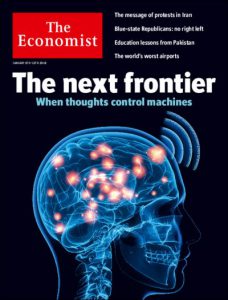A piece on Dr. Eberhard Fetz, WaNPRC core staff scientist and professor of physiology & biophysics has appeared within the cover article published in the January 4th issue of The Economist. The piece, as part of the Technology Quarterly, focuses on the science of thoughts controlling machines.
the January 4th issue of The Economist. The piece, as part of the Technology Quarterly, focuses on the science of thoughts controlling machines.

“BCIs have deep roots. In the 18th century Luigi Galvani discovered the role of electricity in nerve activity when he found that applying voltage could cause a dead frog’s legs to twitch. In the 1920s Hans Berger used electroencephalography to record human brain waves. In the 1960s José Delgado theatrically used a brain implant to stop a charging bull in its tracks. One of the field’s father figures is still hard at work in the lab.
Eberhard Fetz was a post-doctoral researcher at the University of Washington in Seattle when he decided to test whether a monkey could control the needle of a meter using only its mind. A paper based on that research, published in 1969, showed that it could. Dr Fetz tracked down the movement of the needle to the firing rate of a single neuron in the monkey’s brain. The animal learned to control the activity of that single cell within two minutes, and was also able to switch to control a different neuron.” Read more at The Economist.